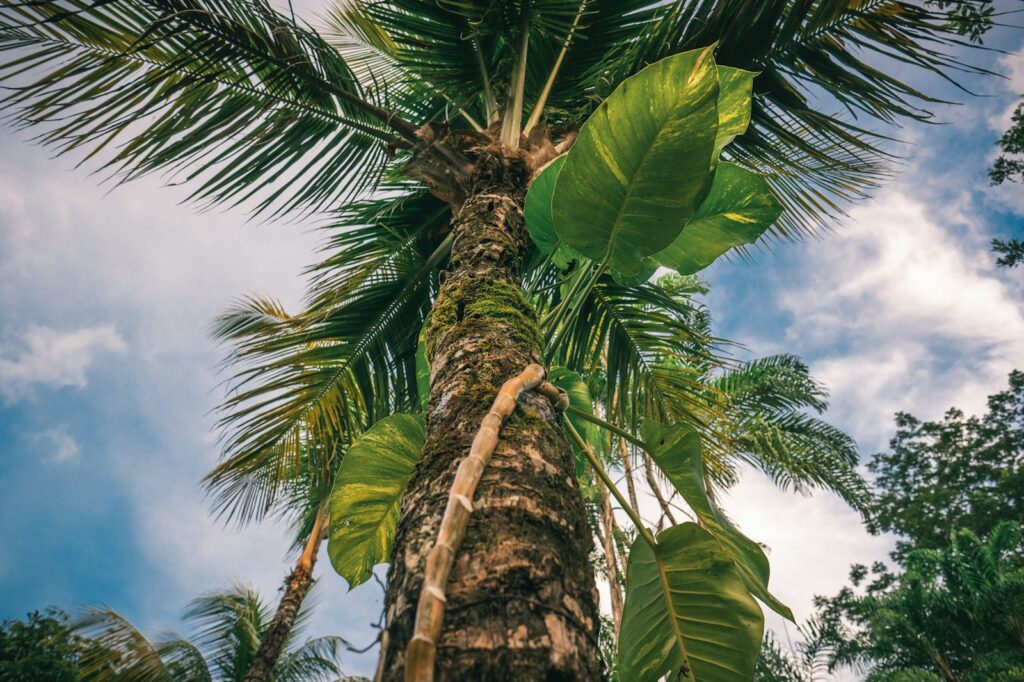
Coconut sugar is gaining global recognition as a healthier, more sustainable alternative to traditional sweeteners like refined cane sugar and high-fructose corn syrup. With its rich, caramel-like flavor and minimal processing, coconut sugar fits perfectly into the rising trend of natural, whole-food ingredients. But how is coconut sugar actually made? The journey from tree to table is both fascinating and rooted in traditional practices passed down through generations. This article explores the complete process of how coconut sugar is made—from the coconut palm tree to your kitchen table.
What Is Coconut Sugar?
Coconut sugar, sometimes referred to as coconut palm sugar, is a natural sweetener derived from the sap of the flower buds of the coconut palm (Cocos nucifera). It is not made from the coconut fruit itself, but from the nectar extracted from the flowering part of the tree. This sap is carefully collected, boiled, and then crystallized to produce a golden-brown, granulated sugar with a flavor profile similar to brown sugar or light molasses.
Unlike white sugar, coconut sugar is minimally processed and retains some nutrients such as potassium, magnesium, iron, zinc, and B vitamins. It also has a lower glycemic index, making it popular among those looking for natural and diabetic-friendly sweeteners.
Step 1: Selecting and Preparing the Trees

The first step in making coconut sugar begins with selecting mature coconut palm trees, typically those aged 5 to 15 years. These trees are tall, robust, and capable of producing abundant sap for many years.
Only the flowering stalks—not the coconuts—are tapped. Each stalk can produce sap for up to 6 months, yielding daily quantities of liquid nectar when harvested properly. Skilled tappers climb the trees daily, a labor-intensive job that requires balance, strength, and careful attention.
Step 2: Tapping the Flower Buds
Once the flowering stalk is identified, the process of tapping begins:
- Cutting the flower bud: The tip of the unopened flower is sliced carefully to allow the sap to begin oozing.
- Attaching a container: A clean bamboo container or plastic bottle is tied to the cut end to collect the sap. This sap is often called toddy or neera.
- Daily collection: The containers are emptied once or twice daily. Fresh sap is highly perishable and must be processed quickly to prevent fermentation.
The sap collected is sweet, watery, and slightly cloudy. It contains around 12–15% natural sugar, primarily in the form of sucrose.
Step 3: Filtering and Straining the Sap

Before boiling, the fresh sap is strained through a fine mesh or cloth filter to remove debris such as dirt, insects, or plant material. This step ensures a clean starting product and helps maintain the desired color and taste of the final sugar.
Some producers may also briefly heat the sap to deactivate enzymes and prevent early fermentation before the actual boiling process begins.
Step 4: Cooking the Sap (Evaporation Process)
Once filtered, the sap is transferred to large open pans or woks—traditionally made of clay or metal—and cooked over a controlled flame or fire. This step is critical and requires constant attention.
Key aspects of the boiling process:
- Time: Boiling can take several hours, depending on the volume.
- Temperature control: The sap must be kept at a steady, medium-high temperature to allow even evaporation without burning.
- Stirring: The mixture is stirred regularly to prevent scorching and ensure uniform heat distribution.
As water evaporates, the sap thickens into a syrup-like consistency. The transformation is gradual and requires a trained eye to judge when it is ready.
Step 5: Crystallizing the Syrup
Once the sap has been reduced to a thick syrup, it is removed from heat and allowed to cool slightly. During this cooling process, the syrup begins to crystallize naturally.
To encourage even crystallization, the syrup is stirred continuously as it cools. This results in the formation of soft granules or a paste-like sugar. Some variations may be left in paste form for packaging as coconut syrup, while others are fully crystallized into sugar.
Step 6: Drying and Grinding (If Needed)

In many modern operations, the partially crystallized sugar is spread out and sun-dried or mechanically dried to remove residual moisture. Once fully dried, it may be:
- Ground into uniform granules
- Sifted to remove larger lumps
- Packaged as fine, medium, or coarse granules
The final product is golden-brown, slightly sticky, and aromatic, with a distinctive earthy-sweet flavor.
Step 7: Packaging and Storage
Once dried and sifted, coconut sugar is packed into various forms for distribution:
- Resealable pouches
- Jars
- Bulk sacks for wholesale or export
Proper packaging is critical to prevent moisture absorption, which can lead to clumping or spoilage. Coconut sugar should be stored in a cool, dry place, away from direct sunlight.
Traditional vs. Modern Methods
While the traditional method remains largely unchanged in rural communities, some producers have adopted modern equipment such as stainless-steel cookers, vacuum evaporators, and food-grade drying machines. These advancements:
- Improve food safety
- Increase production capacity
- Ensure consistency in color, texture, and flavor
However, traditional, small-batch coconut sugar is still prized for its artisanal quality and authenticity.
Environmental and Social Impact
Coconut sugar production is not only a culinary craft but also a sustainable and socially impactful practice.
Sustainability Benefits:
- Low environmental footprint: Coconut palms require little water and grow in diverse agroforestry systems.
- No tree cutting: The tree remains intact and productive for decades.
- Carbon-friendly farming: Coconut trees absorb CO₂, contributing to climate mitigation.
Community Benefits:
- Rural employment: Production offers livelihoods for small farmers and tappers.
- Empowerment: Many cooperatives involve women in processing and packaging.
- Fair Trade opportunities: Increasing global demand is opening doors for ethically sourced coconut sugar.
Conclusion
From tapping the coconut flower to boiling sap into rich, flavorful crystals, the production of coconut sugar is a beautiful blend of nature and tradition. This natural sweetener is not only healthier and more sustainable than refined sugar, but it also supports rural communities and biodiversity. As global awareness grows around healthy living and responsible sourcing, coconut sugar is poised to become a staple in kitchens around the world.
Understanding how it’s made—from tree to table—helps us appreciate every spoonful a little more.



